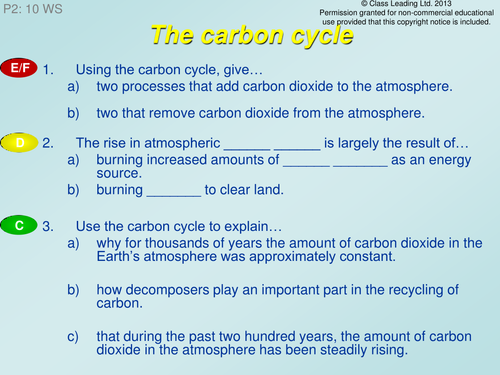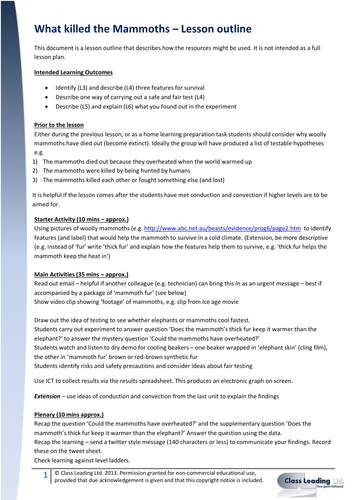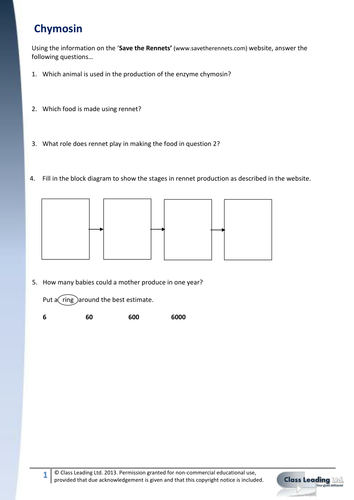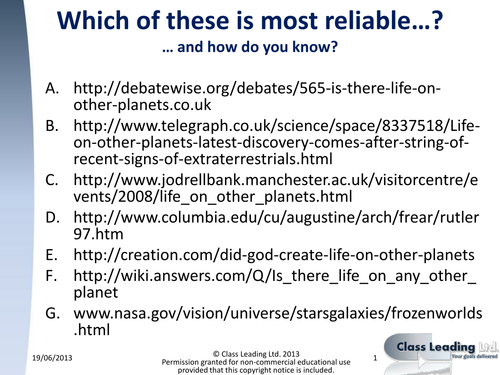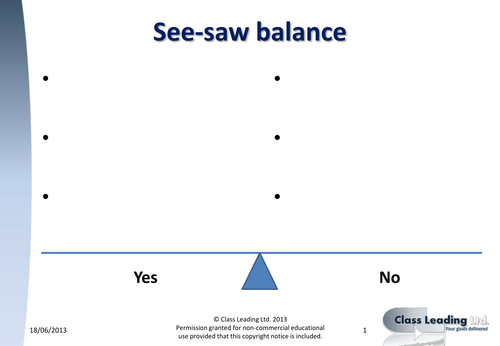314Uploads
260k+Views
194k+Downloads
Biology

What makes you the way you are - questions
This activity contains a powerpoint with graded questions & answers and matching pupil activity sheets, designed to be used at the end of a lesson and/or the start of the next lesson to review previous learning. The questions are based on the previous OCR 21st Century Science Specification unit B1, although could be used with other exam boards.
Clicking through the show reveals answers one a time. These reduce to A5 easily, the ideal size for most pupils. Please note grades are approximate.

The carbon cycle - grade questions
This activity contains a powerpoint with graded questions & answers and matching pupil activity sheets, designed to be used at the end of a lesson and/or the start of the next lesson to review previous learning. The questions are based on the previous OCR 21st Century Science Specification unit P2, although could be used with other exam boards.
Clicking through the show reveals answers one a time. These reduce to A5 easily, the ideal size for most pupils. Please note grades are approximate.

What killed the Mammoths
This is a collection of resources that would work well as a lesson. A lesson outline is provided showing how the resources might be used together. There is an email designed to set the scene and for use as as a ‘hook’. There are also sheets for learners to summarise their learning (tweet).
You may want to supplement the resources with pictures of a woolly mammoth (link only due to copyright restrctions) and video ‘footage’ e.g from Ice Age movie.
This was designed as lesson for a KS3 nurture group although would be suitable for KS2 or other KS3 groups with adaptation.
Please note that this is a non-editable version. A fully editable premium version is also available.

'Where do I stand?' cards - perceptions activity
This activity allows students to indicate their perceptions on a particular question. The question might be a debate e.g. ‘Should we build more nuclear power stations?’, ‘Is cloning a good idea?’ or ‘Should social media be banned?’.
To use the cards, print and laminate the cards. Lay the cards out along a line and ask the students to stand near the card that represents how strongly they agree (not on the card due to risk of slipping). Then ask them to justify their reasoning.
This works really well when carried out before and after a debate.
Designed for use in science, these also have use in other subjects such as Citizenship, PSHE and RE. Inspired by an activity at the NCT.

'Save the Rennets' - reliability of the internet
This activity involves looking at reliability of information found on the internet and encourages students to evaluate this critically in light of the discovery of new information. Students really do engage with the activity and find it a useful learning experience. An activity sheet and guidance sheet are included. Please note that the resource points to two external websites which I acknowledge as external sources of information and as such cannot be held responsible for the content of these websites. It is recommended that these are checked fully before use.

Sources of information - starter
This resource is an was originally designed for instant engagement, to be on display on entry to the room. The students are given a period of time (say 3 minutes) to rank order the sources of information. This works well in groups with mini-whiteboards. The teacher then asks students to indicate whether each source was in the top 3, middle 3 or bottom 3 – e.g. by show of hands. This supports a discussion on reliability and disagreement between groups provides chance for cognitive conflict and students explaining their reasoning. It was originally designed as a starter to LSS activity 3.1

Evaluating websites from URLs
This resource is a short powerpoint show and a pdf of the first slide. The idea is that learners read the URLs for a series of websites and decide whether they are trustworthy. They could put them into one of say three categories (e.g. High, Medium. Low).This is great for stimulating debate amongst learners, especially if the task is completed as a group. It is very effective when learners are asked to explain their reasoning. The powerpoint show can then be used to develop understanding further.

Data Handling - Key words
This is a small collection of key words related to data handling. They are designed as a display tool. Remember if laminating to use matt laminates for wall displays to avoid reflection problems.
Key words: range, mean, true value, average, real difference.

Weighing up arguments - See saw writing frame
This resource is a collection of 6 slightly different see-saw balances that can be used with learners to help them develop the skills to weigh up an argument. The idea is that students will list reasons on both side of an argument (e.g. Should we have Nuclear Power?). They then use this to help make a decision. The scoring column on some sheets allows learners to score each argument out of a maximum of say 3. Add the scores on each side to see which has the stronger argument. This also includes phrases to support a more detailed conclusion. This was inspired by 21st Century Science.

Food chains and energy transfer - questions
This is a worksheet based activity that includes some higher order thinking to explore the ideas around energy transfer in simple food chains. Two versions are included, one with legacy GCSE grades, the other without. (please note that grade indications are only approximate). Why not try getting learners to choose a selection of questions to answer (e.g. do Q1-4 or Q3-8) An answer sheet is included.
This resource was originally designed for OCR 21st Century Science unit B3.
A premium editable version of this is available at: https://www.tes.com/teaching-resource/-11858631
Keywords: energy, transfer, food chain, efficiency

The Carbon Cycle - Extracting info from a text
Keywords: Carbon cycle, photosynthesis, respiration, decomposition, combustion.
An activity sheet and guidance sheet (with answers highlighted) in which students extract information from a text and then use this to identify the processes in the carbon cycle and ultimately construct a diagram from these. These can then be compared to one published in a textbook to allow students to make corrections. This works exceptionally well as a peer assessed activity.


